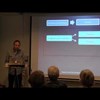struktur
Age Structure and Productivity Growth
There are two competing hypotheses regarding demographic processes and technological progress. One holds that a rapidly growing adult population stimulates technological progress, while the other hold
Cooperation, structure and hierarchy in multiadaptive games
2011. Phys. Rev. E. 84:061148. Abstract Game-theoretical models where the rules of the game and the interaction structure both coevolves with the game dynamics —multiadaptive games—capture very flexible
Forecasting Global Growth by Age Structure Projections
This paper uses demographic projections of age structure and correlations with GDP and GDP growth to study the forecasting properties of demographically based models. Extending the forecasts to 2050 s
EU Economic Growth and the Age Structure of the Population
2009. Economic Change and Restructuring, 42(3), 159-187. Online October 2008.
Macroeconomics and age structure in a welfare state—Sweden 1946-2005
Pp. 51-95, Chapter 5 in: Demographic Change and Intergenerational Justice: The Implementation of Long-Term Thinking in the Political Decision Making Process, Jörg Chet Tremmel (ed.), Springer Verlag,
Swedish Post-War Economic Development: the Role of Age Structure in a Welfare State
Life cycle patterns exist in practically all human behavior as well as in resources and capabilities; therefore variations in age structure affect all aspects of the aggregate economy. Against this ba
Ageing and the German Economy – Age-structure Effects Based on International Comparisons
2011. Verlag Bertelsmann Stiftung, Gütersloh.
Segregation and Urban Design: Does the Urban Structure Inhibit the Sharing of Public Space?
Ann Legeby, KTH School of Architecture Seminars hosts are Peter Hedström, David Sumpter and Fredrik Liljeros from the Institute for Futures Studies. The seminars are free of charge and take place at 12

Implicit Mind: Unconscious Logic and the Structure of Thought with Eric Mandelbaum
Recording from the Implicit Mind Workshop at the Institute for Futures Studies in Stockholm, May 2015.
Occupations in space: Using individual mobility patterns to reveal the latent dimensions of the occupational structure
Social Science Research, vol. 127 [Part of the Introduction] Recent studies on occupational structure and individual mobility suggest that the number of categories in the occupational structure vastly e








